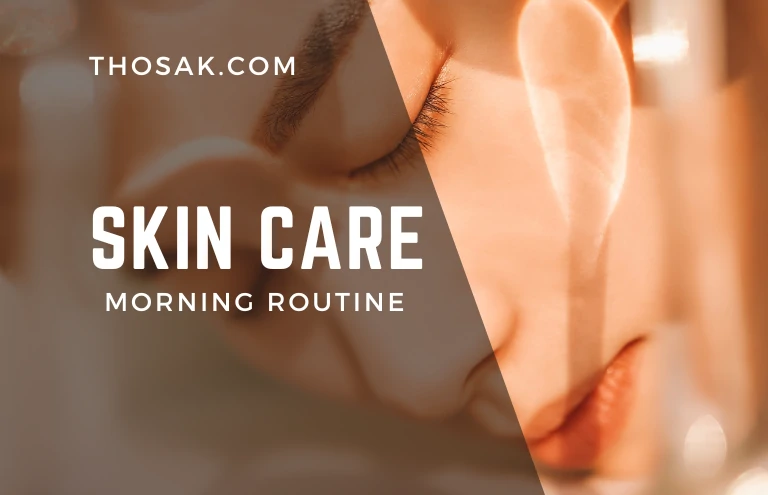For those with normal skin, a simple morning skincare routine involves cleansing, exfoliating, and moisturizing. Follow these essential steps to maintain healthy and nourished skin.
Step 1: Cleansing
While you may think that nighttime cleansing is sufficient, it’s a good idea to cleanse your skin in the morning as well. This extra step is important because germs from your pillowcase can transfer to your face while you sleep. Even with frequent pillowcase washing, a morning cleanse is crucial for achieving clean and radiant skin. Dr. Rachel Nazarian, a dermatologist, explains that bacteria from saliva and oils from your hair can easily find their way to your face and eyes as you toss and turn at night. To establish a healthy habit, start your day with a gentle, non-drying cleansing cream. Simply splash your face with warm water, create a soft foam by mixing a small amount of cleanser with water in your hands, and gently massage it into your skin using circular upward motions, avoiding the eye area.
Step 2: Exfoliation (Once or Twice a Week)
Most experts recommend exfoliating once or twice a week to eliminate built-up dirt and oil, reduce dullness, and remove dead skin cells, promoting healthy cell turnover. Exfoliation can be achieved through gentle scrubbing or by using chemical exfoliants and peels, which deeply clean your pores. Some exfoliants, such as foaming exfoliating cleansers, become creamy when mixed with water, effectively removing pollutants and dead cells for a brighter and smoother complexion. Focus your exfoliation efforts on areas prone to blackheads or flaky skin, especially the nose and cheeks, where clogged pores tend to occur.
Step 3: Apply an Essence for Skin Hydration
An essence is a moisturizer with a serum-like texture that nourishes the skin. It contains reparative ingredients like fruit and flower extracts to restore your skin after cleansing, providing hydration and supporting cellular renewal for healthier, more radiant skin that’s ready to absorb subsequent products. This often-overlooked step has numerous benefits, including balancing the skin’s pH levels to prepare it for serums and moisturizers. The use of essences has a long history, with documented evidence in centuries-old geisha beauty rituals in Japan. Applying an essence is essential to ensure your complexion looks fresh throughout the day.
Step 4: Incorporate Topical Acne Medications
If you suffer from acne breakouts or have acne-prone skin, apply acne treatments like salicylic acid and benzoyl peroxide directly to clean, dry skin at this stage of your skincare regimen. This allows these medications to be absorbed most effectively by your skin. There’s one exception to this rule for acne formulas containing retinoids, which can sometimes be applied after moisturizer to prevent dry or sensitive skin in certain cases. If you’re seeking a product to reduce the appearance of dark spots, enlarged pores, and pimples, consider a tea tree oil face serum.
Step 5: Apply an Antioxidant Serum
Serums are concentrated treatments that target specific skin concerns. They are applied early in the skincare routine to ensure they have maximum contact with the skin. For example, using a vitamin C serum during the day not only improves the appearance of dark spots, uneven tone, and enlarged pores but also offers various benefits, such as reducing skin inflammation and neutralizing damage from UV rays and environmental pollutants.
Step 6: Use Eye Cream
The skin around your eyes is the thinnest and most delicate on your face and tends to show signs of aging first. Regular use of an eye cream keeps the skin around your eyes elastic and can help improve or prevent fine lines, undereye bags, and collagen loss. To apply, gently pat a small amount of eye cream under and around your eyes, including the upper eyelid and just below the brow arch, using your fingertips.
Step 7: Moisturize with Sunscreen
Moisturizing your skin with SPF is the most crucial step in your skincare routine. Not only does it provide hydration, but it also seals in the benefits of the previous steps. The CDC recommends daily sunscreen use, even on cloudy or cooler days. Anti-aging sunscreen protects your skin from harmful UV rays and shields it from the stress and aggressors of city life, such as fine particles and heavy metals, which accelerate skin aging. According to the World Health Organization, up to 90% of visible changes attributed to aging may be caused by sun exposure. Therefore, daily sunscreen use is essential for preventing sun damage and promoting healthy, radiant skin.










